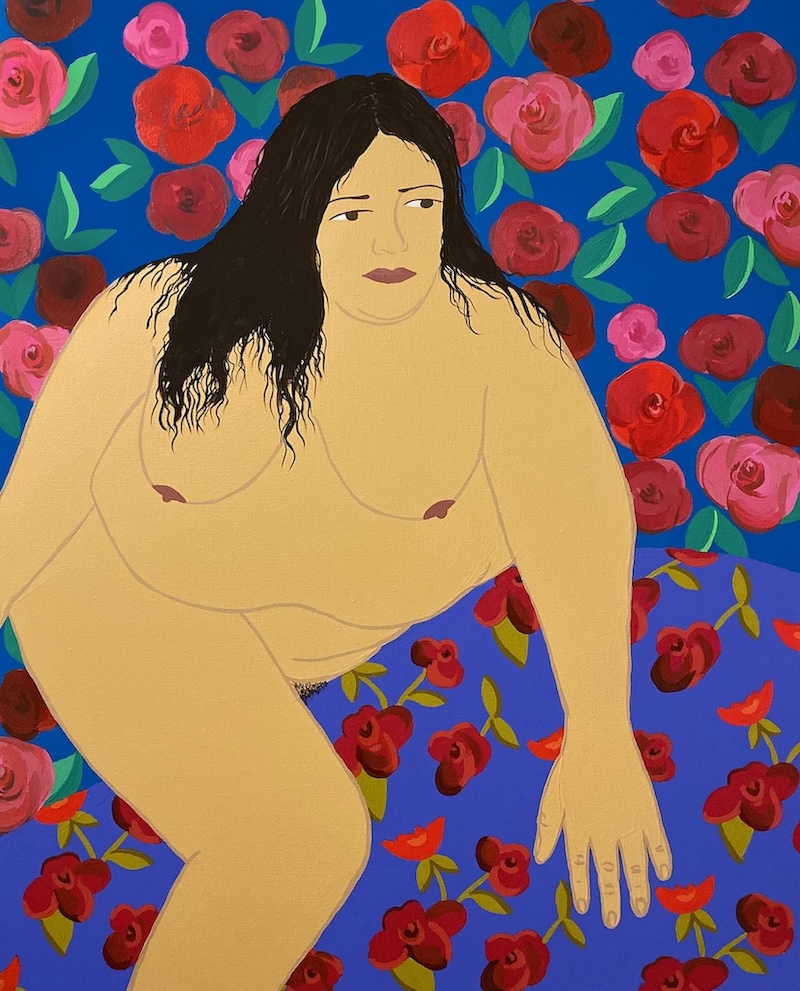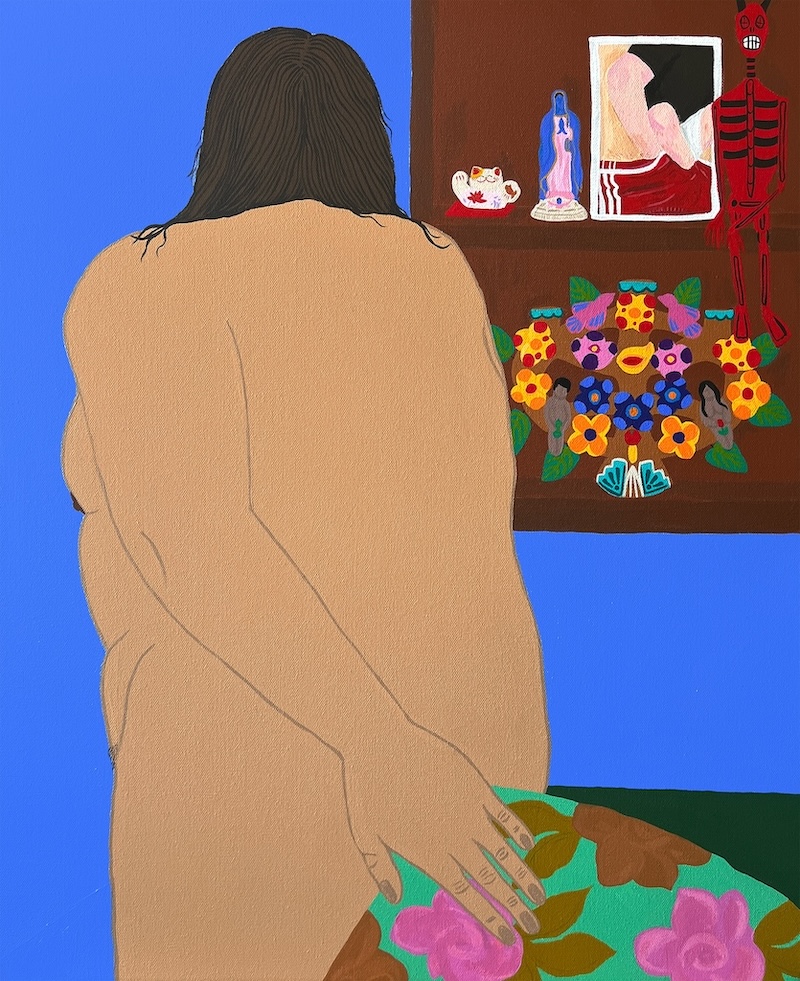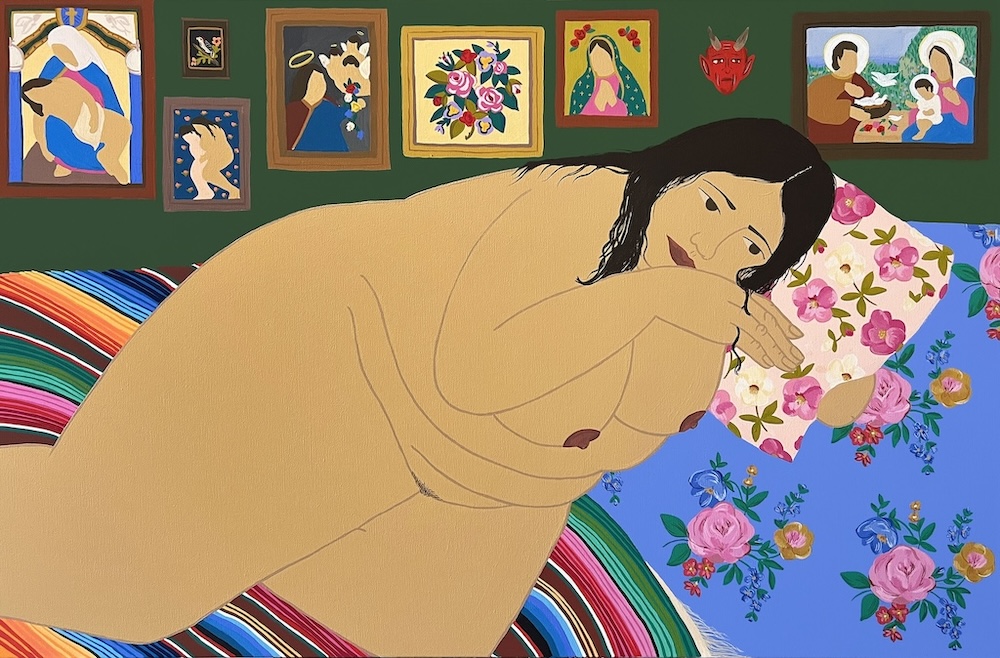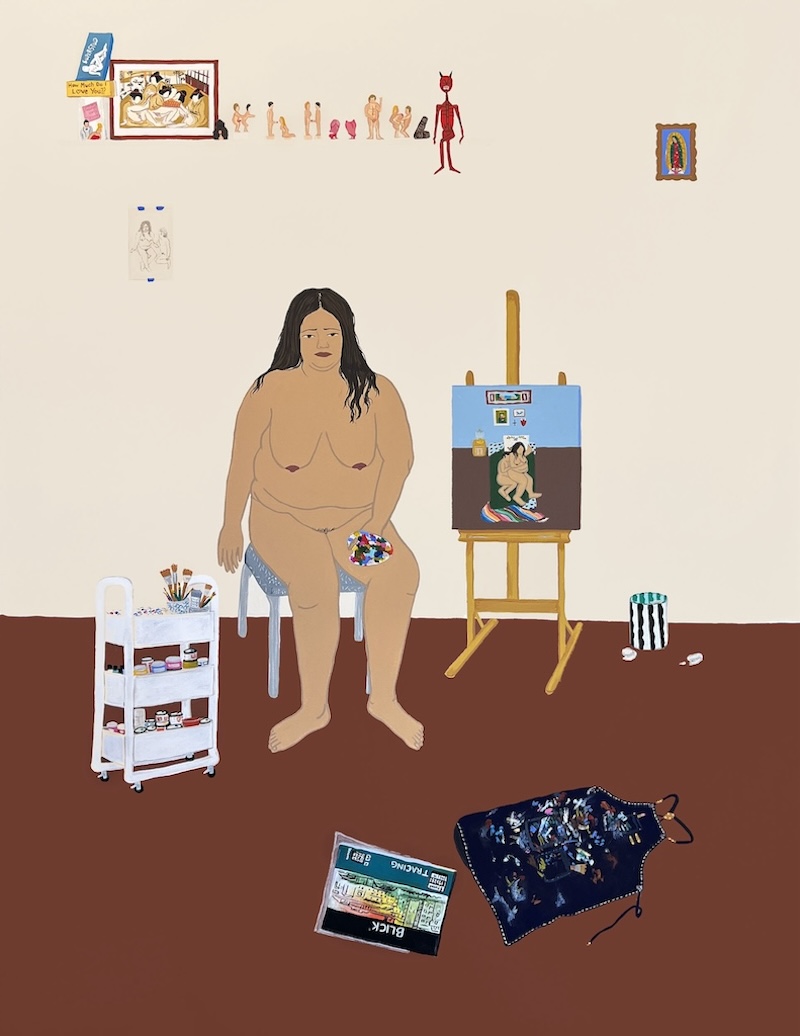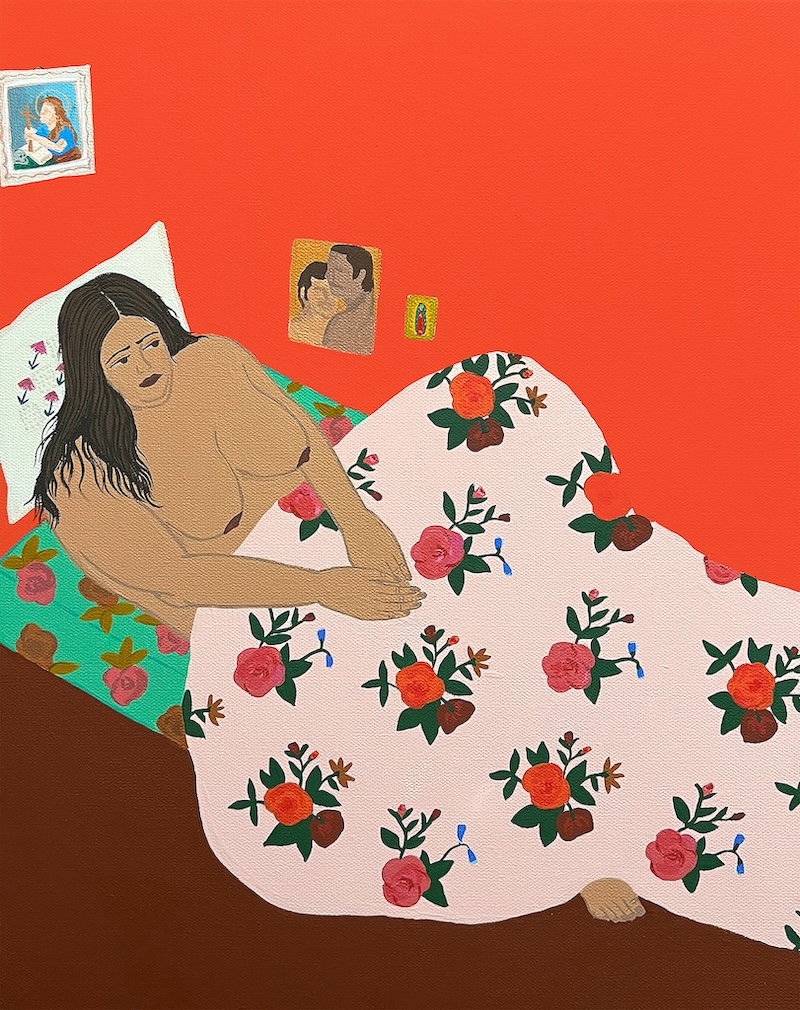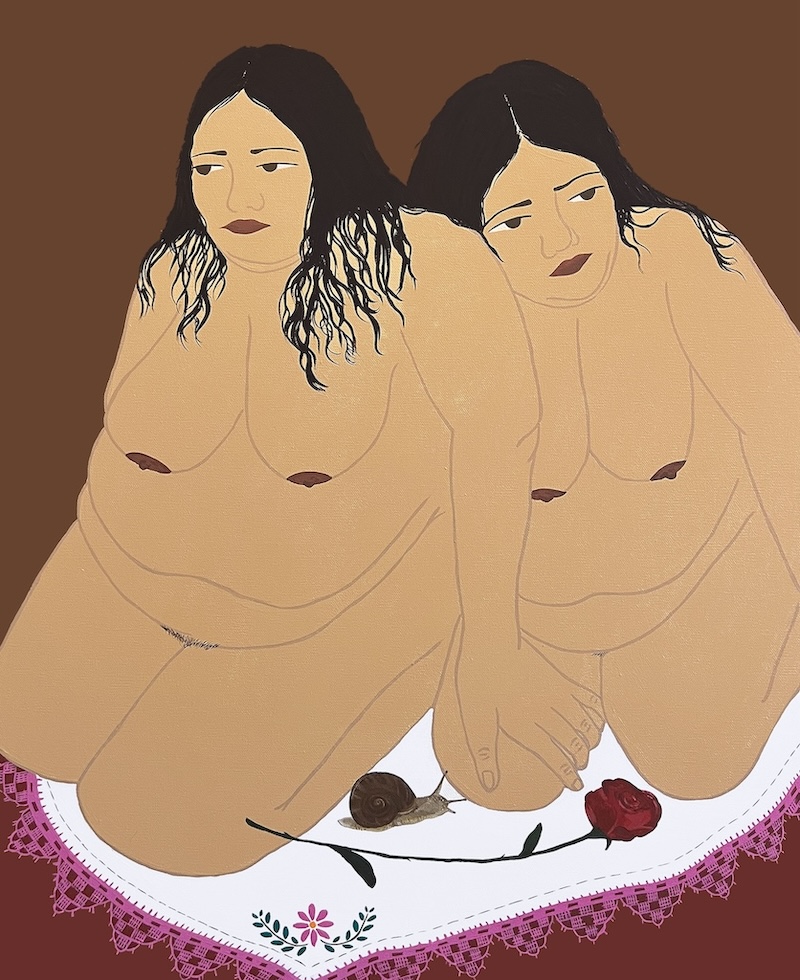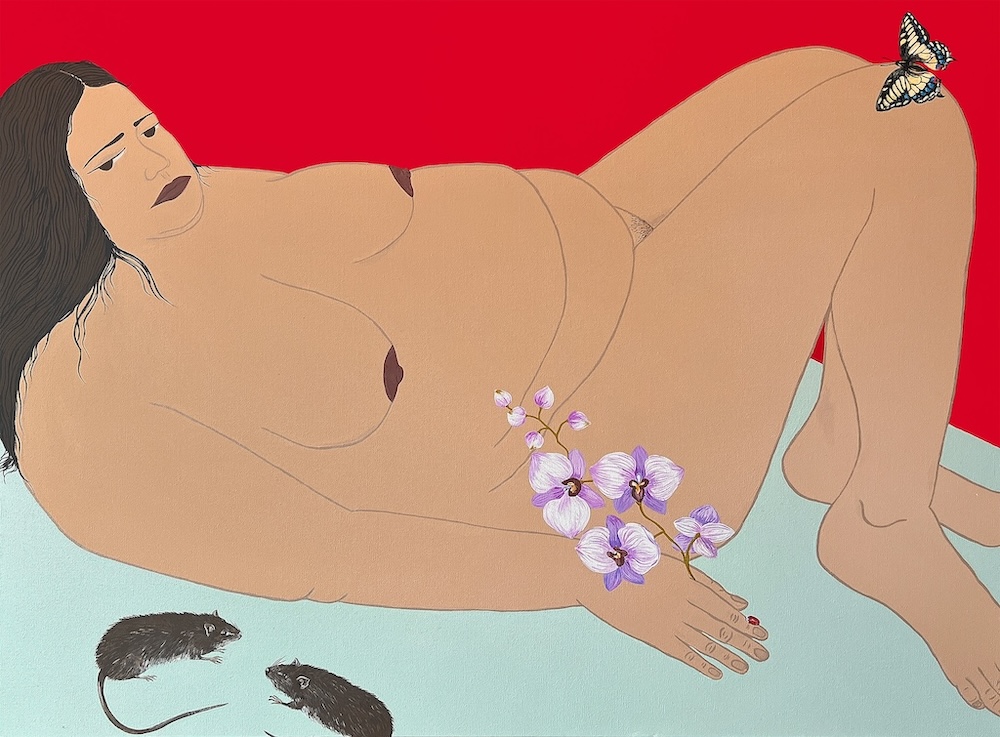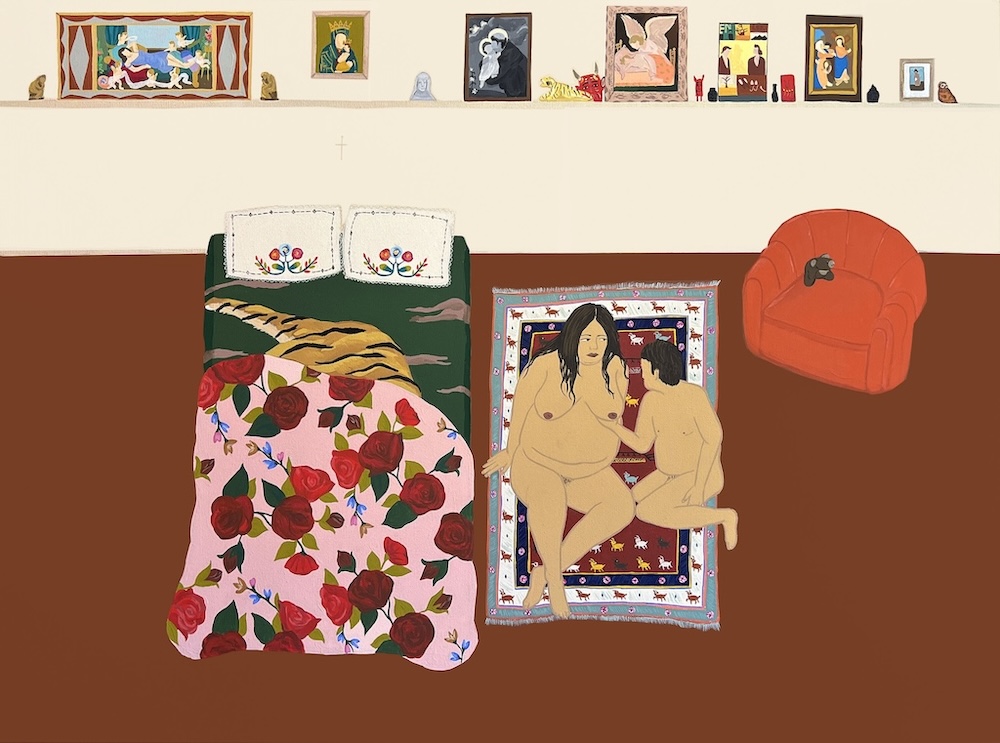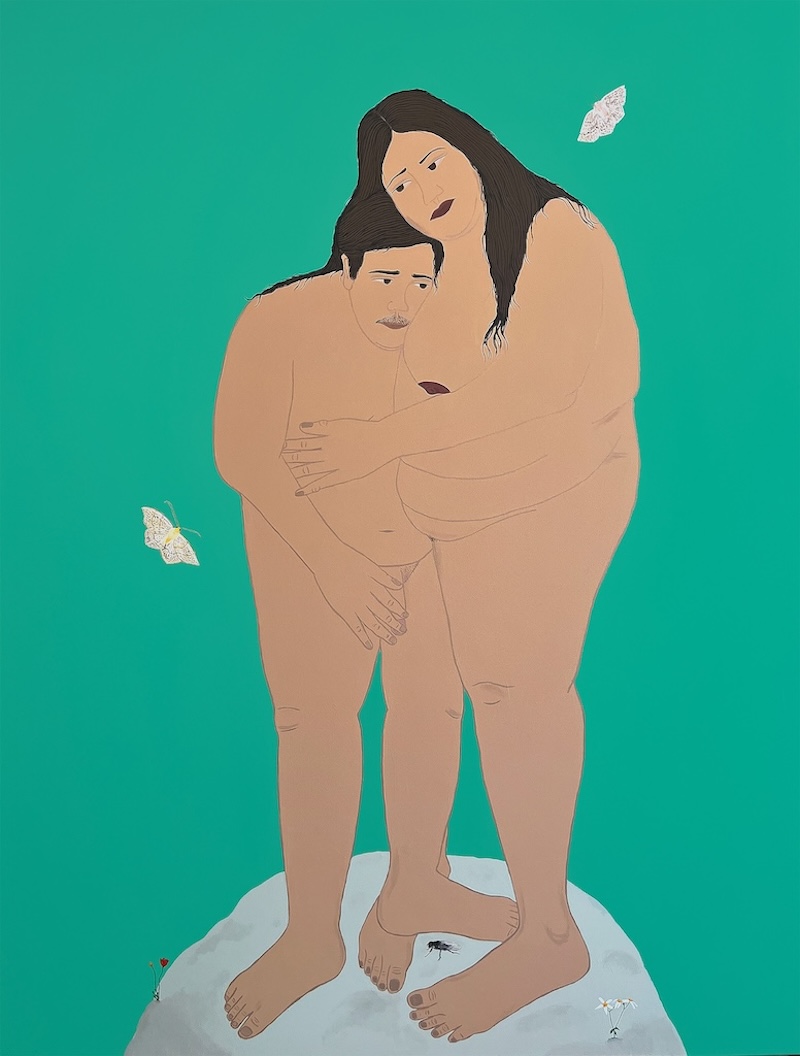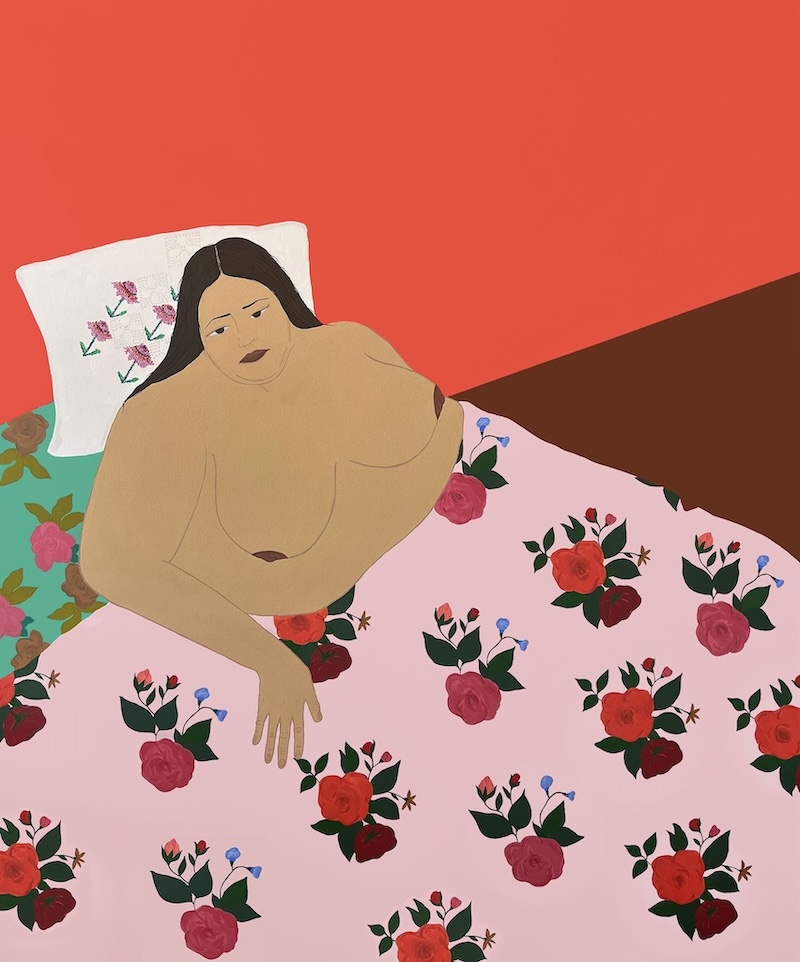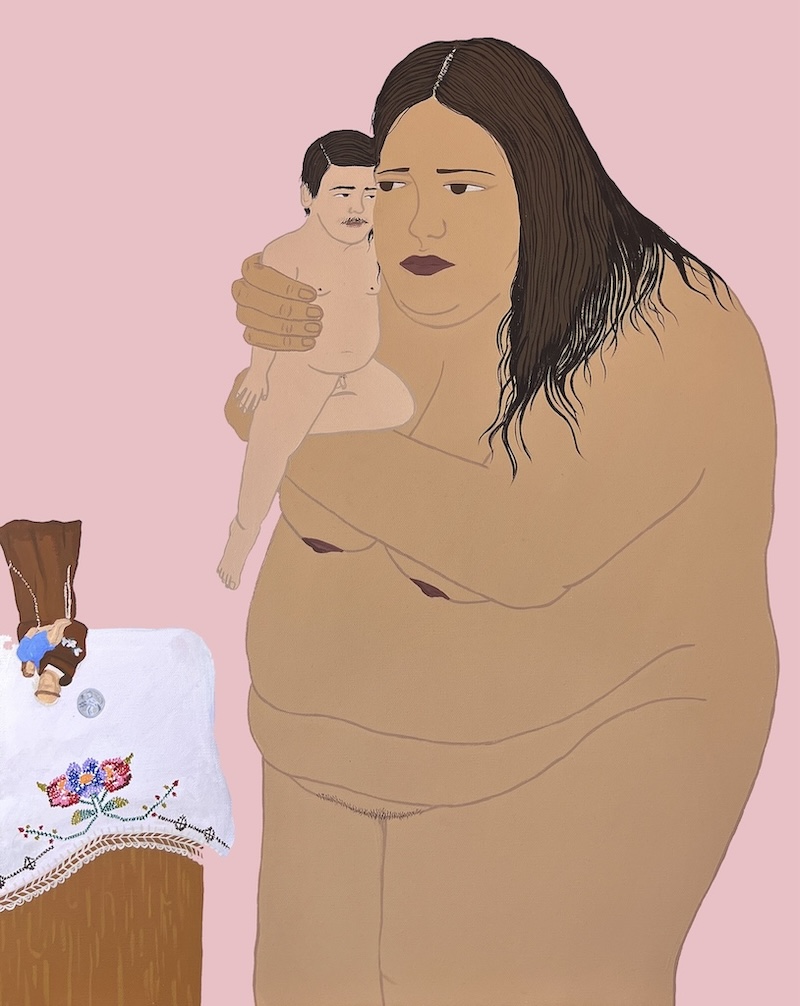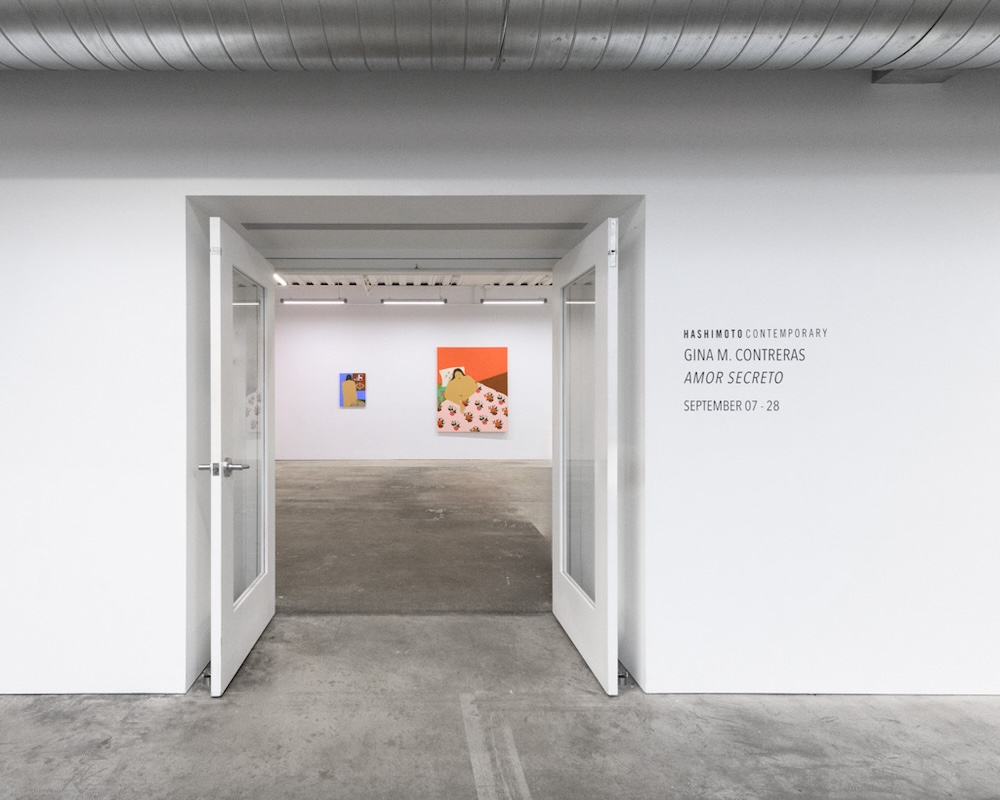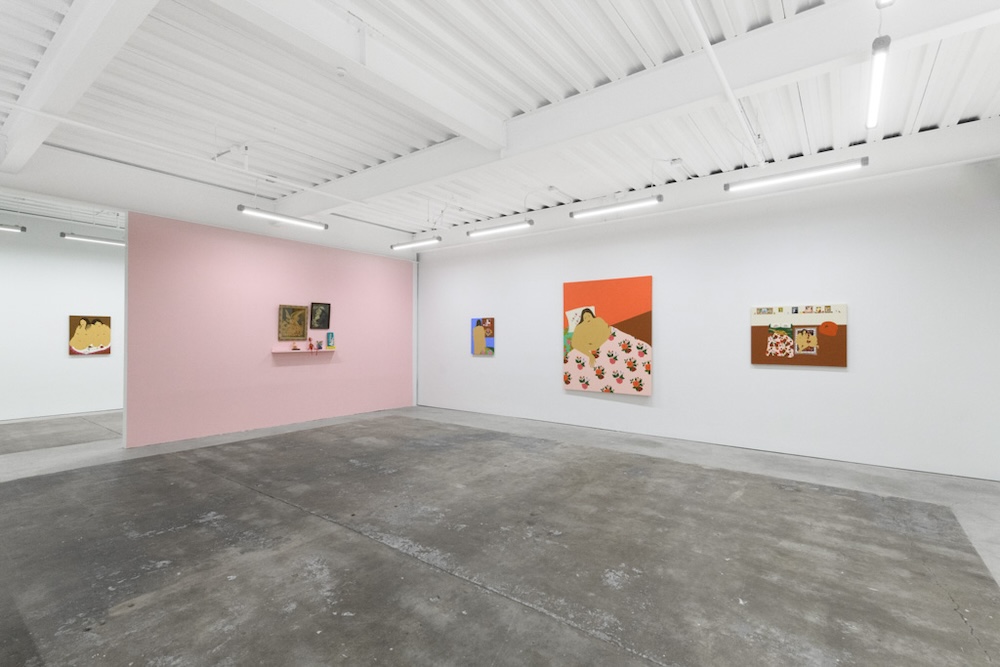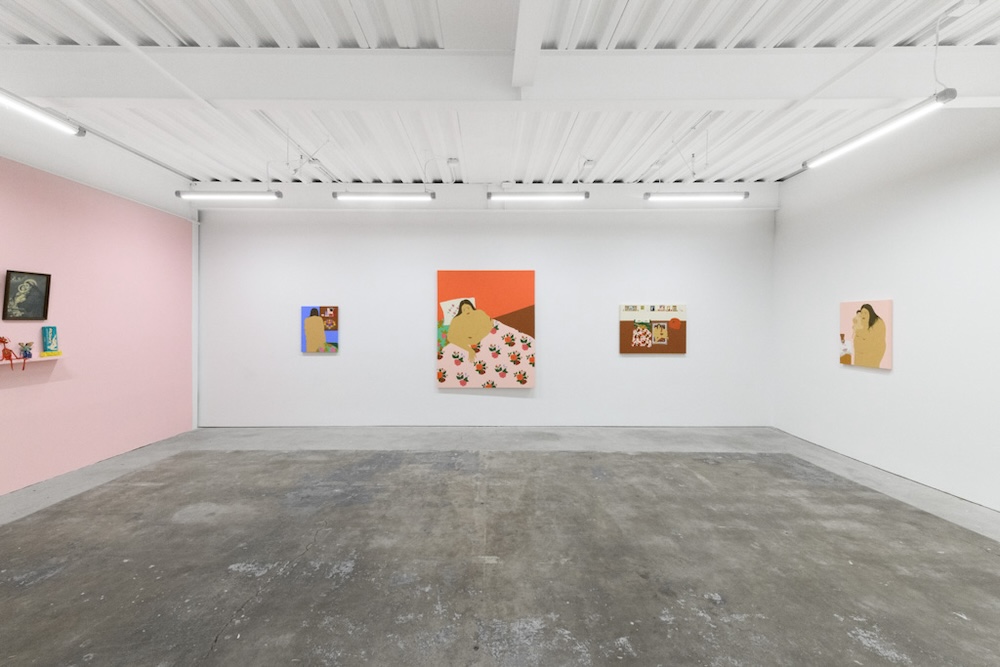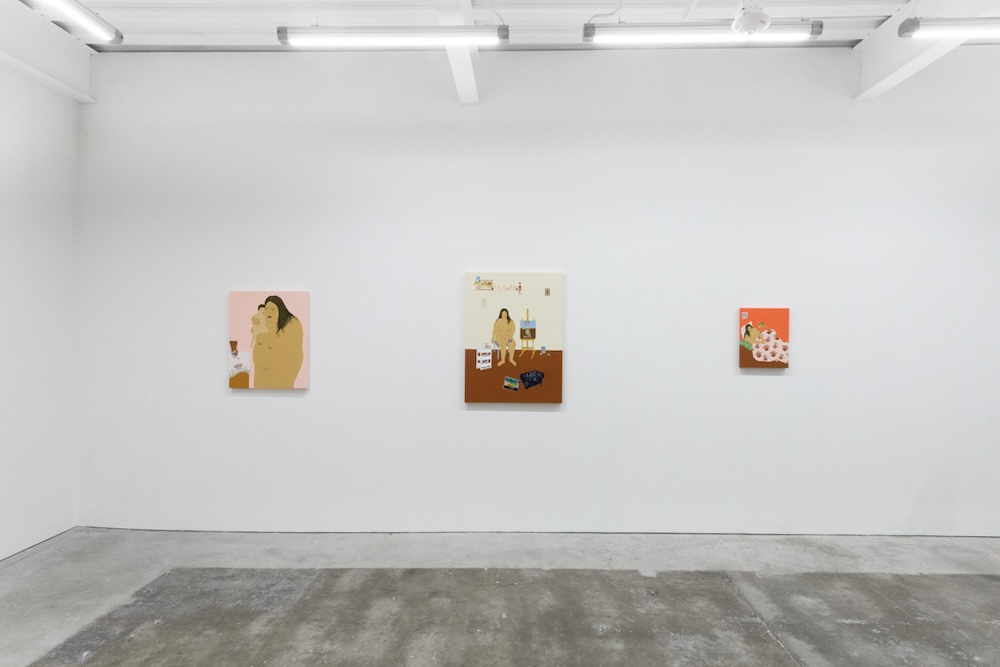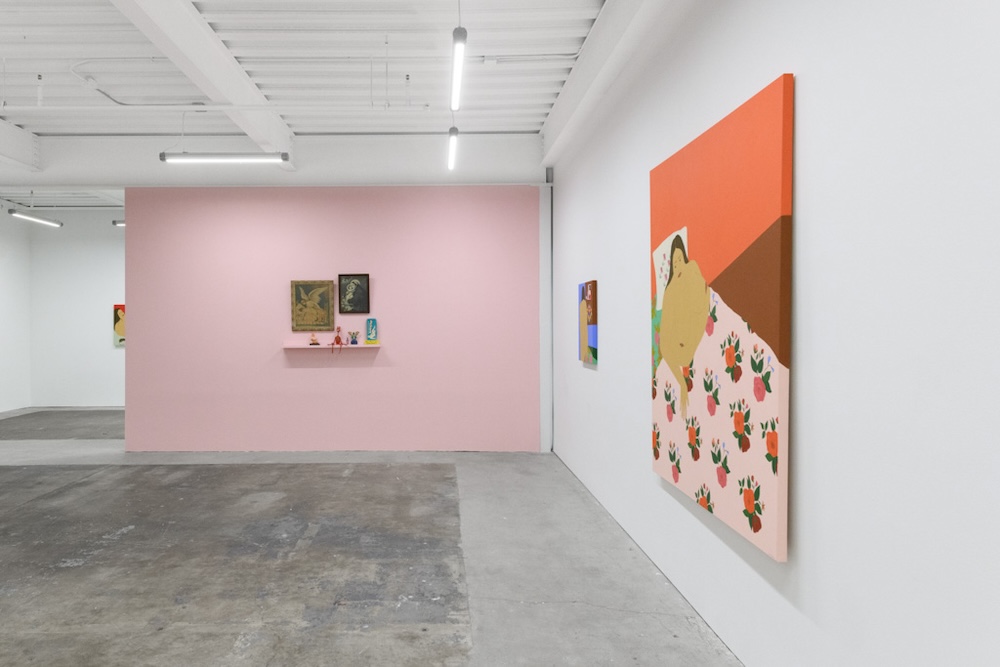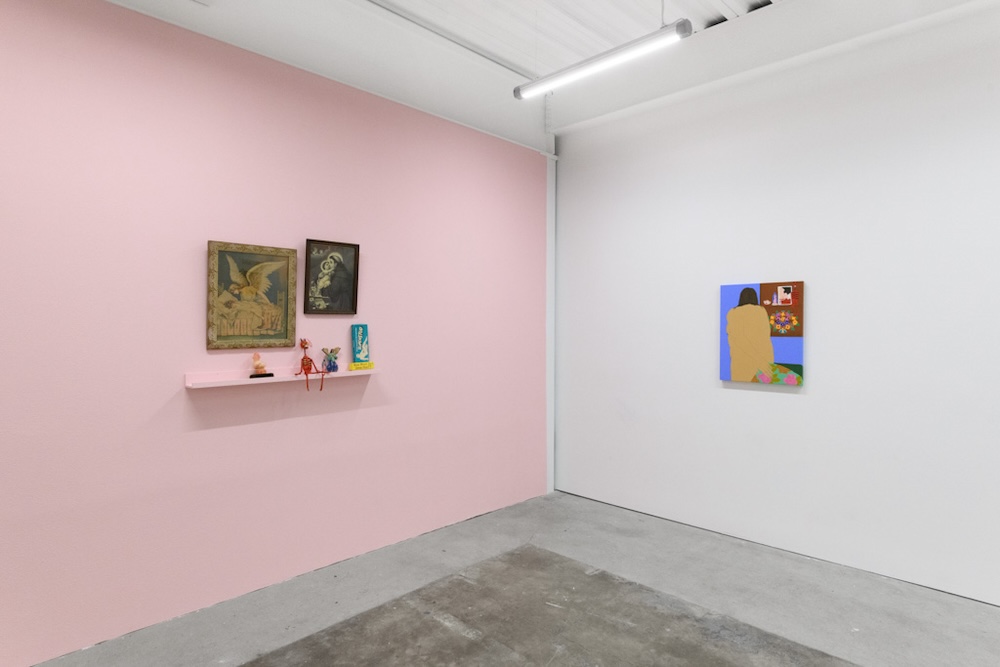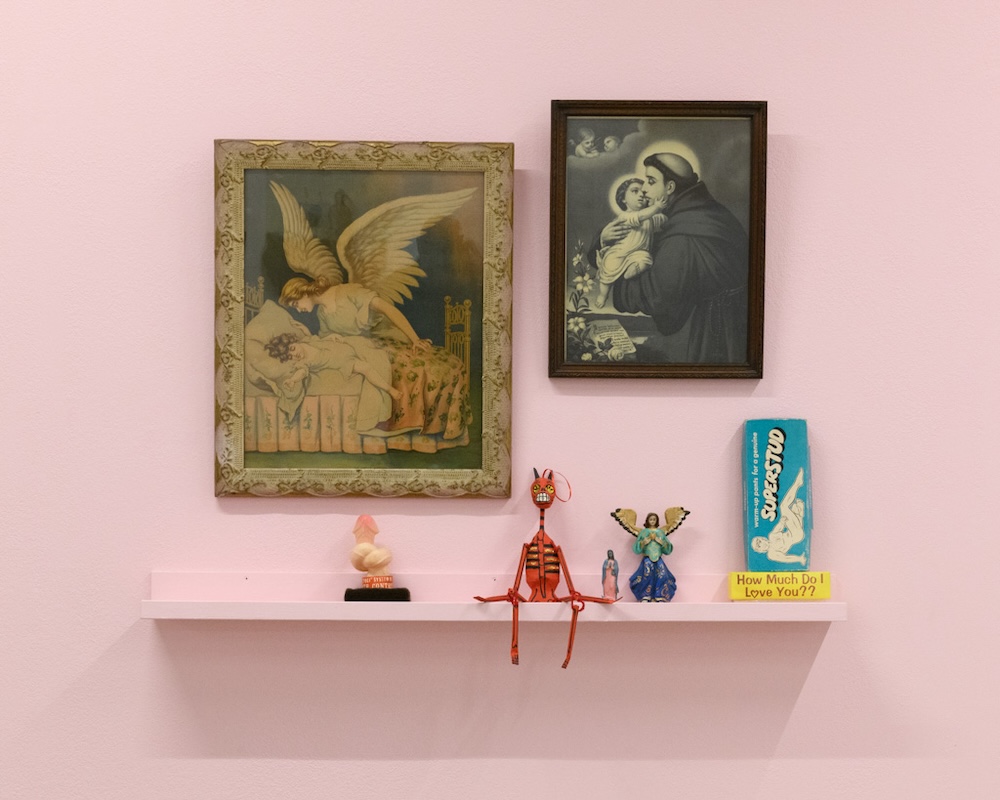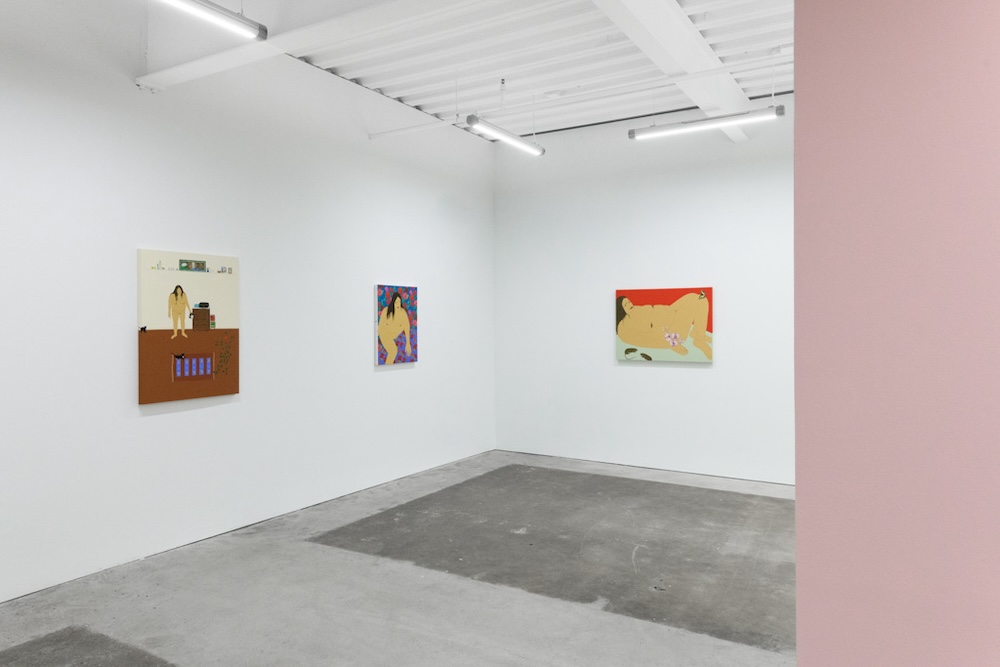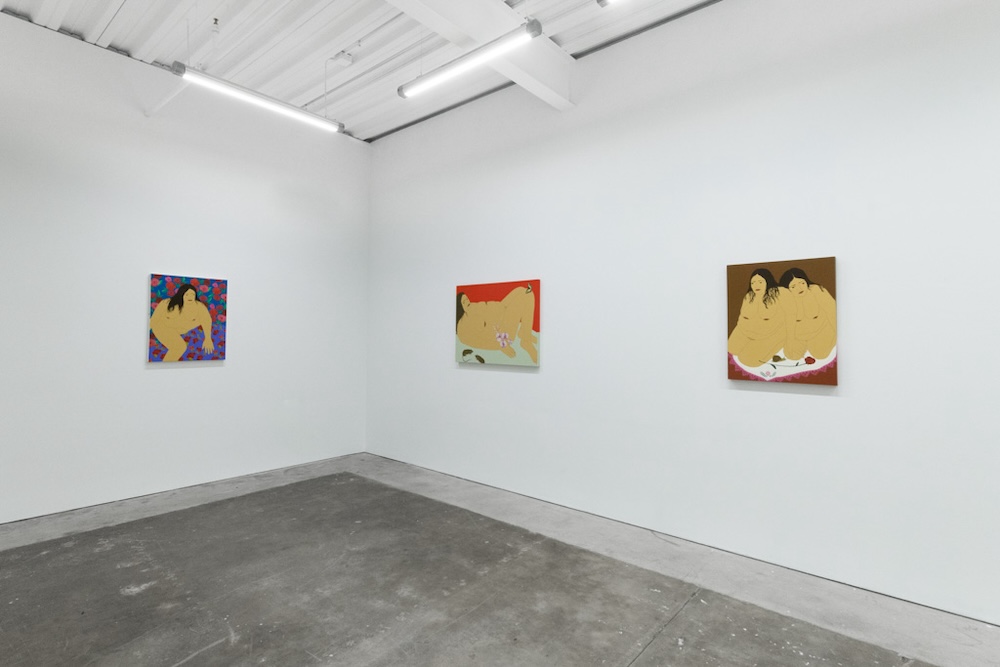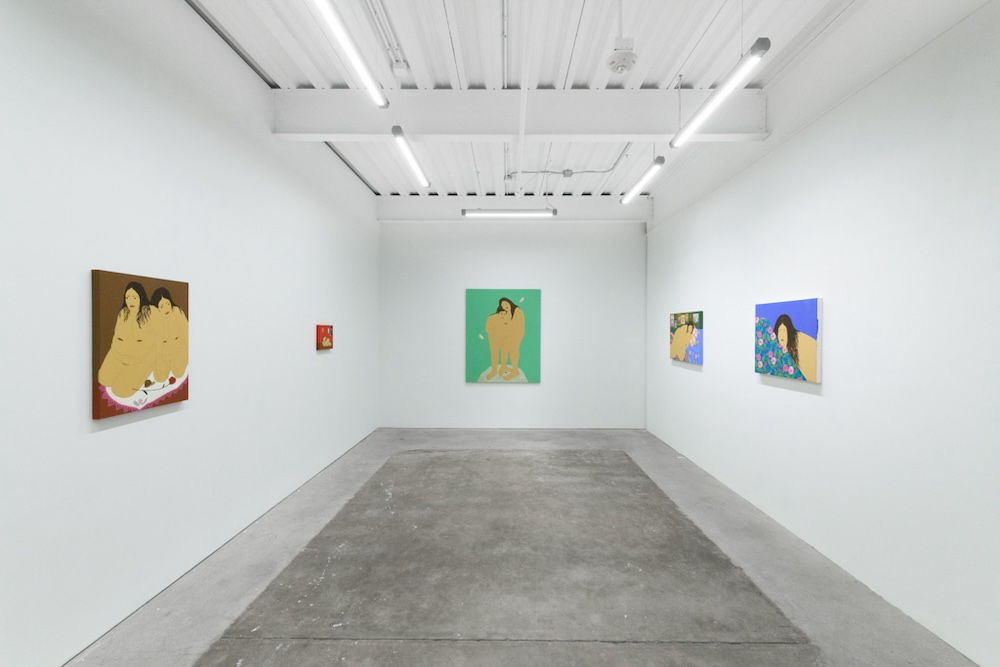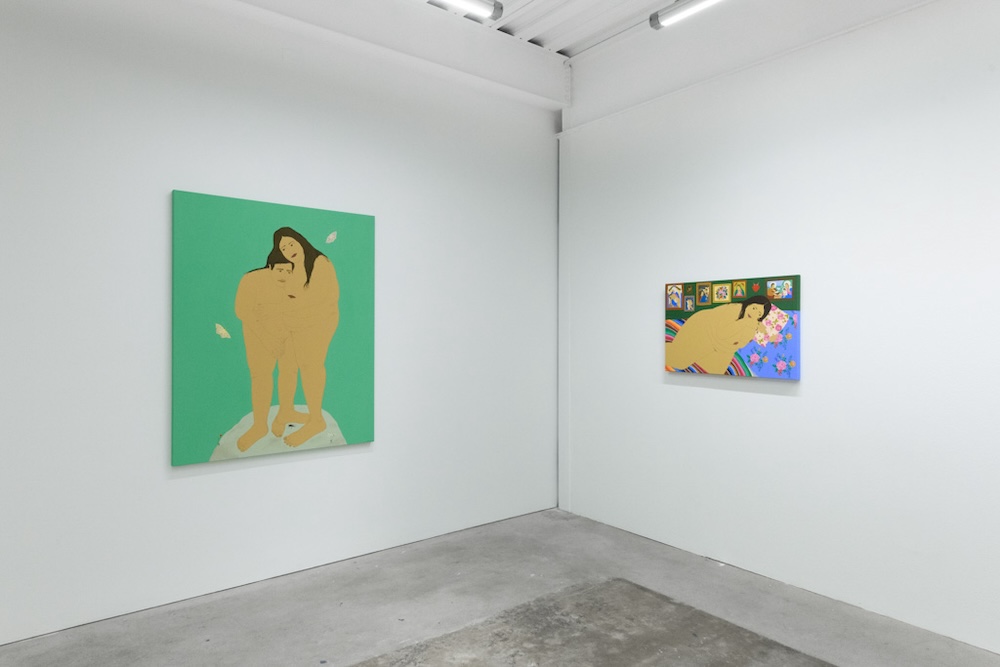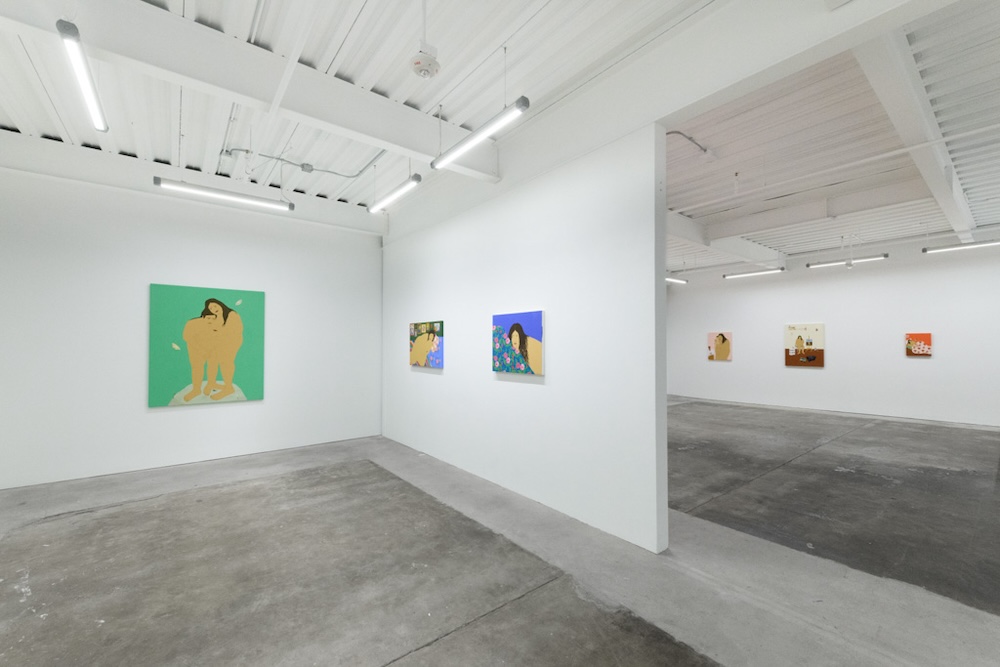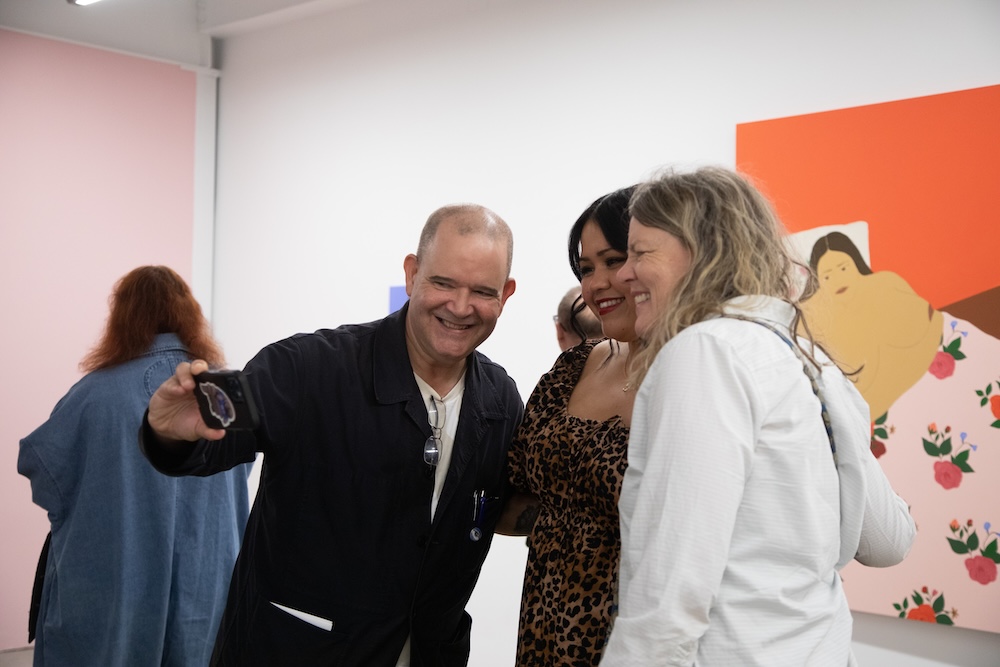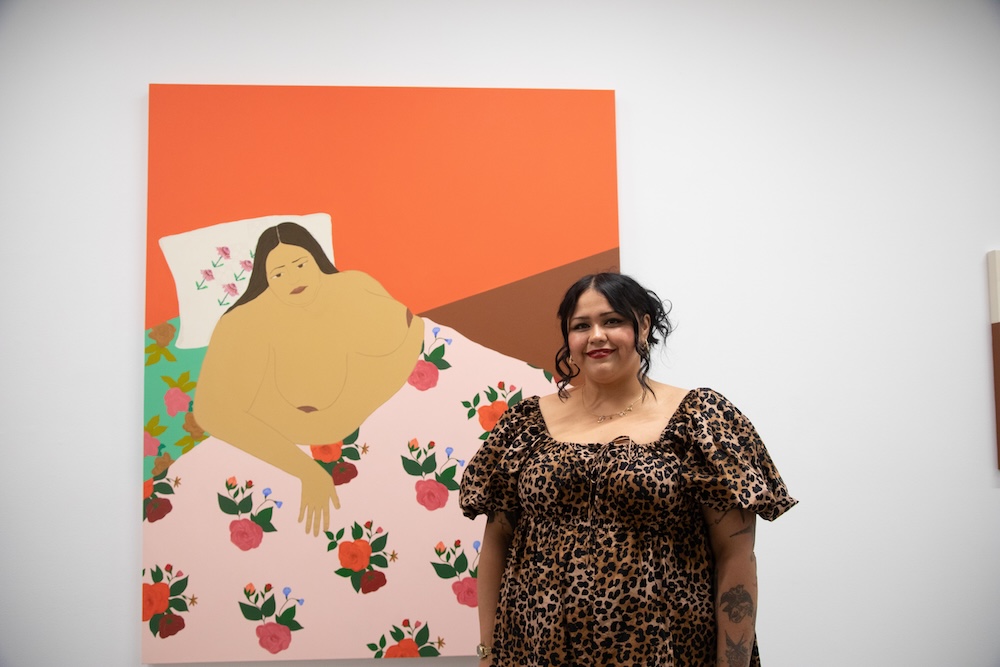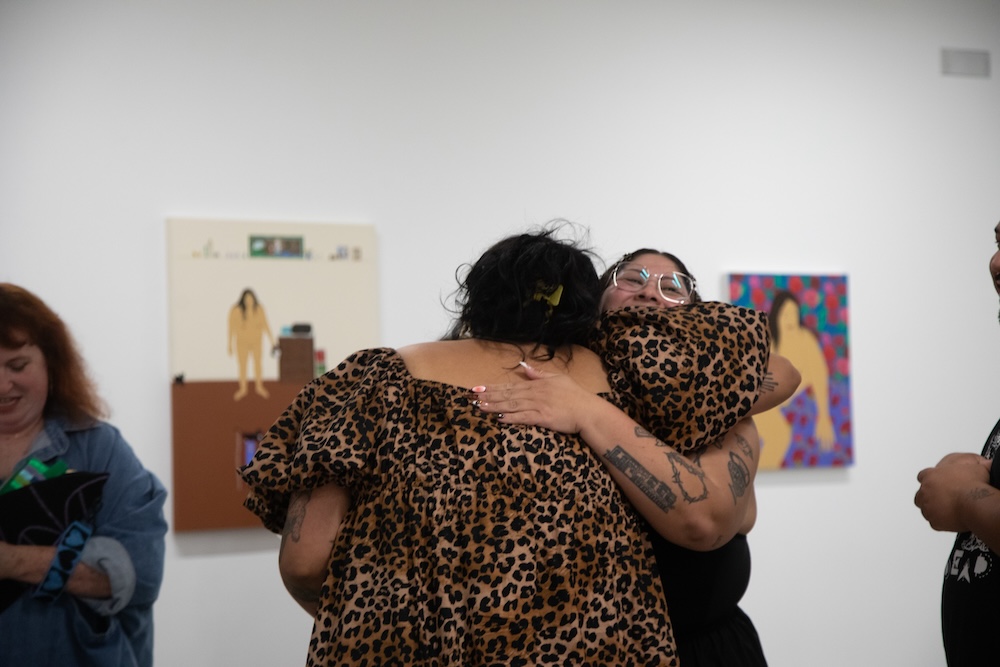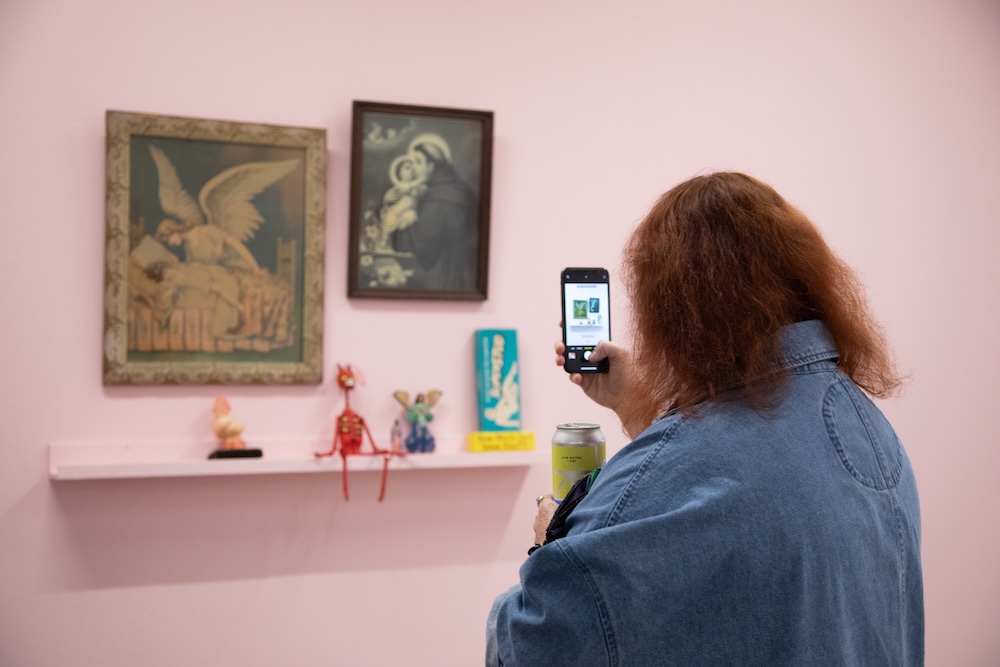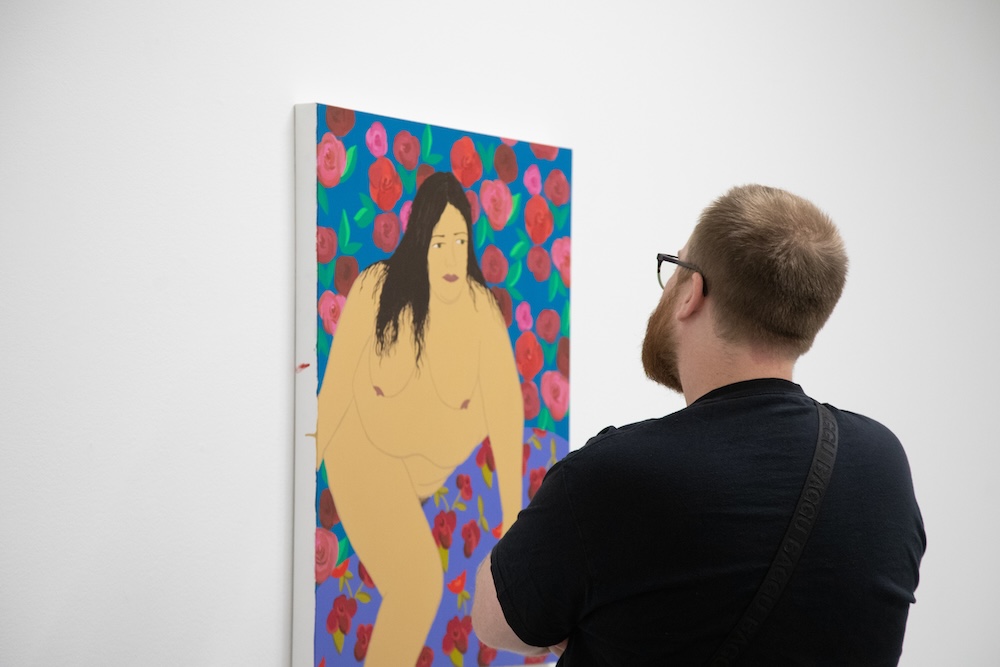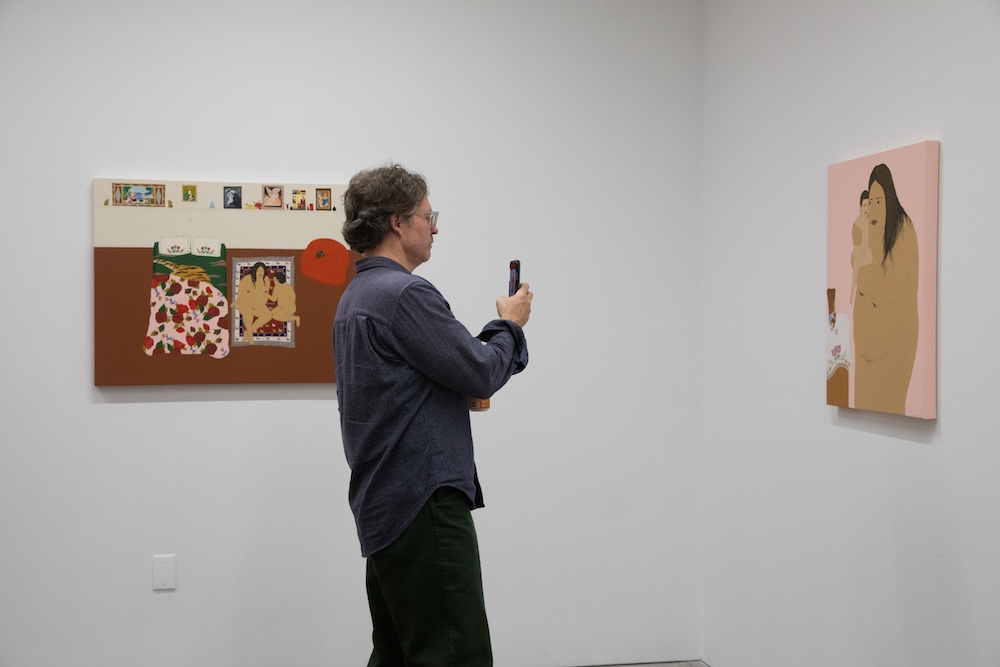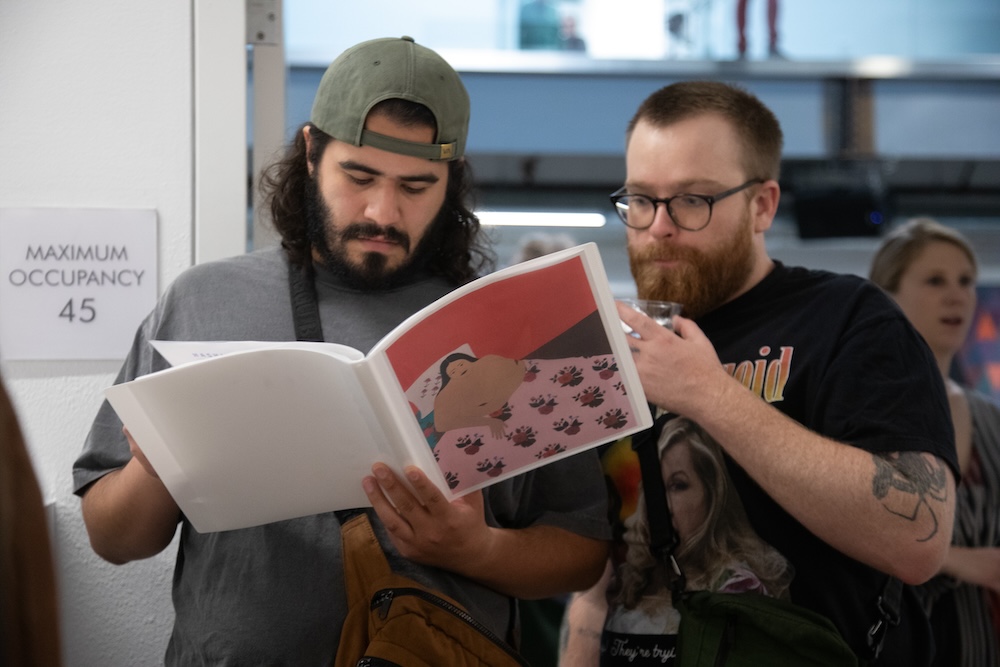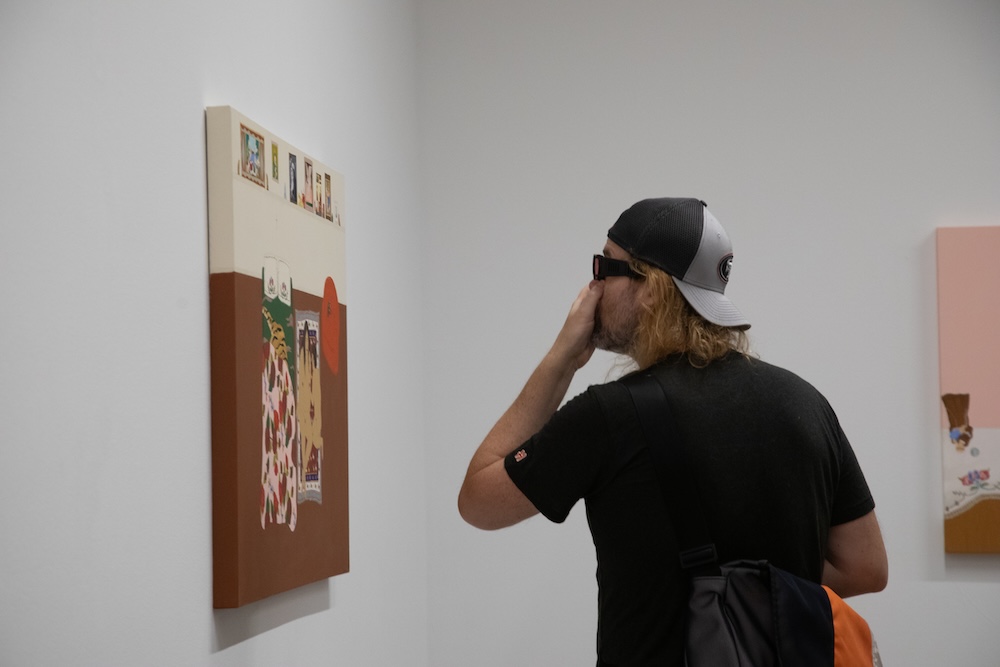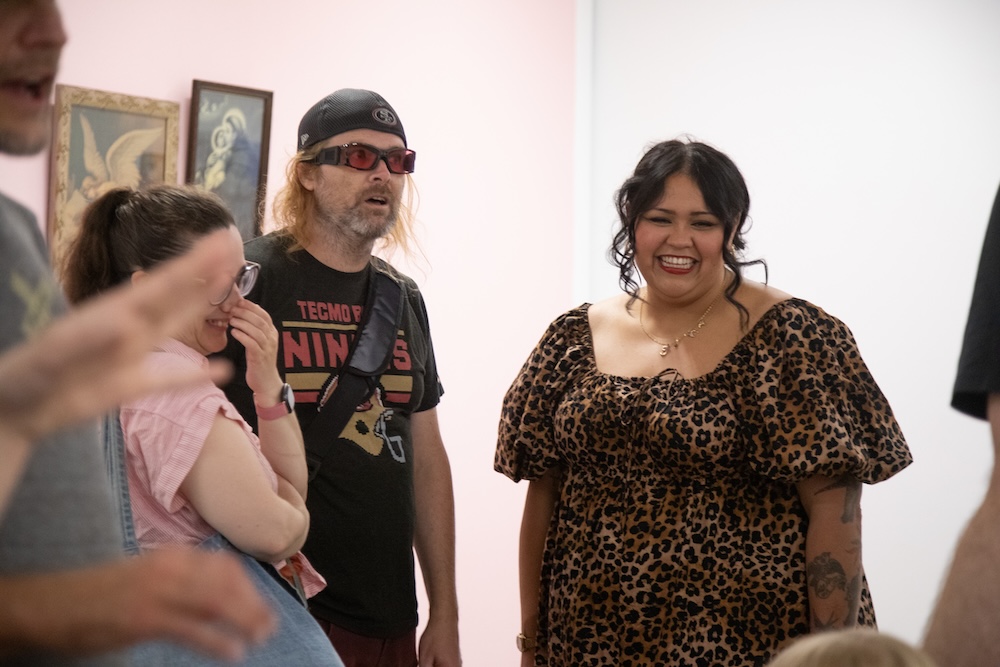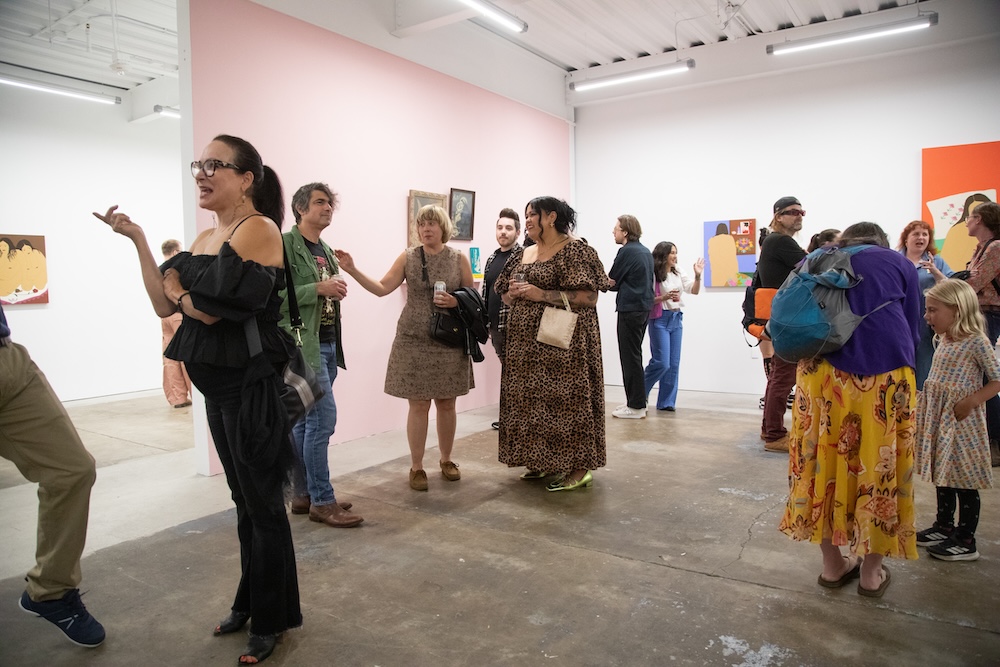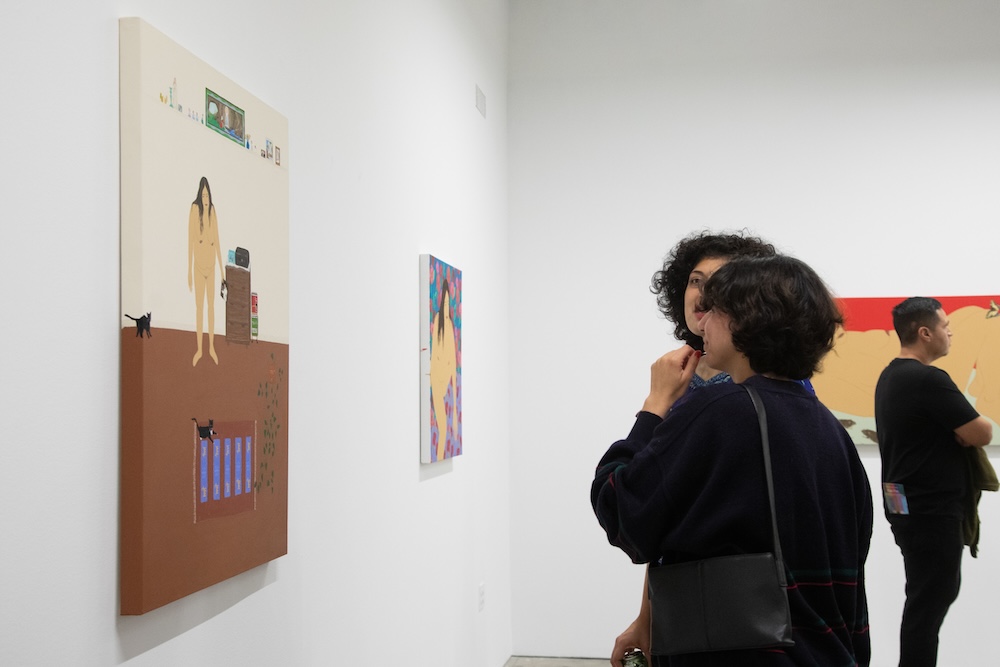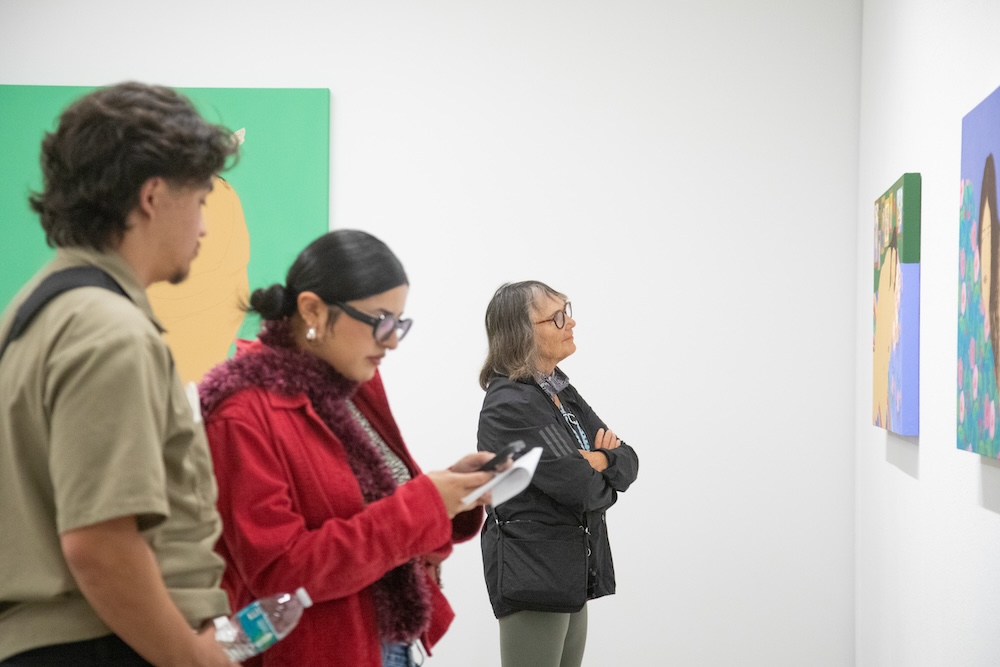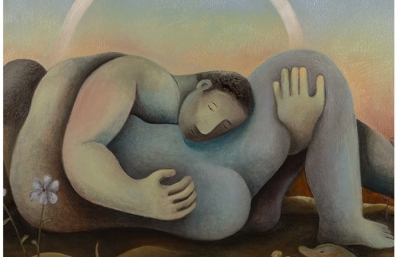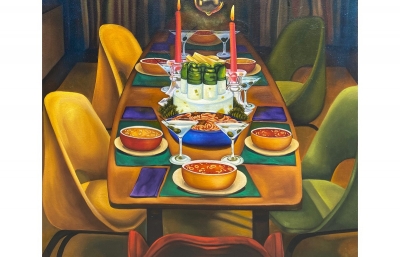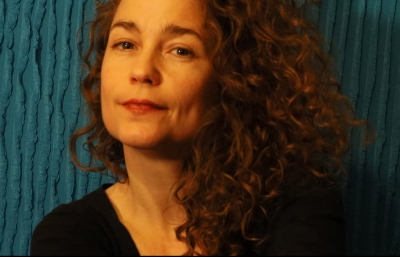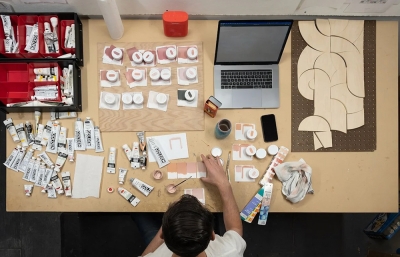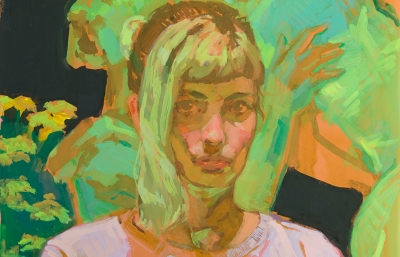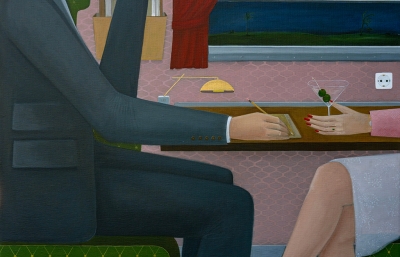Secrets are complex—everybody has one, but nobody would want to be one. San Francisco-based artist Gina M. Contreras often suspects that she may be the proverbial secret lover, bearing herself and her complicated emotions around this status in her latest solo exhibition Amor Secreto at Hashimoto Contemporary San Francisco. Before all her paintings were even finished, she spoke with the gallery’s Katherine Hamilton about this new body of paintings, why being so vulnerable is a strength, and she unfurls a few hidden meanings behind repeated symbols and patterns.

Katherine Hamilton: The exhibition’s title is Amor Secreto, creating a narrative through line between the paintings about your status as a secret romantic lover—or at least, the feeling of being one. Can you say more about how you are navigating this deeply emotional theme, depicting yourself and both real and imagined partners in these scenes?
Gina M. Contreras: Amor Secreto really delves into the nuances of intimacy and emotional vulnerability through my paintings. This theme of being a "secret romantic lover" resonates deeply with me, both personally and artistically.
In navigating this theme, I approach each piece with a blend of personal reflection and imaginative exploration. The paintings often draw from my own experiences, capturing moments of passion, longing, and the bittersweet nature of unspoken or hidden connections. By intertwining real and imagined partners in these scenes, I aim to explore the complexity of love that exists in a space between reality and fantasy.
The depiction of these relationships is intentionally layered and nuanced. In some works, you might see direct references to personal encounters or feelings that have been significant to me. In others, the characters and scenarios are more symbolic, representing patterns or emotions rather than specific individuals.
The mood of the language you created for the exhibition is so different from that of your last solo exhibition Continued Comfort at Stephanie Chefas projects in Portland, Oregon. Do you feel like you’ve changed how you want to frame your paintings, or does this tonal shift lend itself more to the emotional shift of the work?
My paintings are extremely personal, reflecting my nature as someone who wears my heart on my sleeve. Continued Comfort was about finding solace during a time of emotional need, focusing on the loss of a loved one rather than the loss of a lover. The tonal shift you see in my work now is more about the emotional journey I'm on rather than a change in how I want to frame my paintings.
As you mentioned, the work you make is deeply personal. Not only in how you depict yourself and the relationships you’re in, but that you add elements from your bedroom into the painting—you reveal yourself and your space. The vulnerability gives the artworks so much power, but I also wonder: do you ever worry about revealing so much of yourself in the work?
I think that because I am always painting myself nude, I’m already laying everything bare. This openness in my work means I don’t worry about oversharing.
In an interview with Southern Exposure last year you spoke about having a crude sense of humor that often comes out in the titles of the paintings. The works in this exhibition feel pensive, vulnerable, and maybe serious. Is this an apt characterization to make about your new work, or do you feel like your sense of humor is in the paintings in ways I maybe haven’t noticed? How do you feel your sense of humor shows up in your work now?
This series might come across as more pensive and less vulnerable, but I never hide my sense of humor. For instance, the title Gina La Cochina comes from a nickname I was given when I was very little. It translates to "Gina the dirty one," and it was given to me solely because it rhymes. Now, using it as a title, I’m playing with the meaning behind the nickname. As an adult, it takes on a different, more fitting meaning. Humor is always going to be present in my work, whether it’s subtle or obvious. It’s an essential part of how I express myself and connect with the viewer.
You also emphasize the inclusion of patterns in this body of work. Vulnerable Surfaces, for example, shows three types of floral patterns, which, if I remember correctly, are all connected to your family and heritage. Can you say more about the importance of these patterns in your work and your personal life?
The patterns I use in Vulnerable Surface are very personal as they come from fabrics I own or have encountered. The pillowcase, for example, is an actual one from my childhood that came from Mexico. The blanket in the painting is my interpretation of the patterns on my mother’s kitchen curtains, and the mattress cover fabric is based on a memory of a rug from an estate sale. These items are significant to me because they are familiar and bring me comfort, as well as stylistic pleasure. They’re too pretty not to paint, and their presence adds a layer of intimacy to the work.
You also play with perspective a lot in your works, flattening the backgrounds to be nearly on the same plane as the foreground, and orienting the objects and subjects in the painting from different angles. Where do you think you draw this multi-perspectival style from? Was it intentional or something you noticed after the fact?
I do enjoy playing with perspective, and I believe it’s connected to how I relate to the spaces around me, especially since all of these works are created in my apartment. The multi-perspectival style is intentional—it reflects the fusion and whimsical mix of my own studio space. The perspective in my paintings literally comes from whether I’m sitting on the edge of my bed or at my chair, as I’m constantly moving while painting. This style, along with the layering of foreground, middle, and background, is informed by screen printing techniques. The background appears flat because my goal is to bring the objects and their significance to the forefront.
I’m also curious because you’ve mentioned that Remedios Varo is one of your favorite painters, and the influence of that loose group of female Mexican Surrealist painters on you is very evident. Whose work do you often look to for inspiration?
I’m a big fan of photography, and some of my inspiration comes from photographers like Laura Aguilar, Louis Carlos Bernal, Larry Sultan, and Nan Goldin. What I admire about their work is how they capture an essence of vulnerability in the spaces they occupy. This sense of openness and rawness resonates with me and influences how I approach my own paintings, reflecting a similar emotional depth and connection to personal space.
Finally, since the exhibition revolves around secrets and secret love, I wanted to know if there are any secrets you want to reveal about the works—the titles, the small votives, the situationships?
I prefer to keep my secrets to myself. When I’m ready to reveal something, you'll see it in my work. I’m not a tease; if something is meant to be shared, I will express it through my art.
Amor Secreto is on view through September 28th at Hashimoto Contemporary San Francisco. Opening night photos by Genevieve Parker, installation images by Shaun Roberts.


